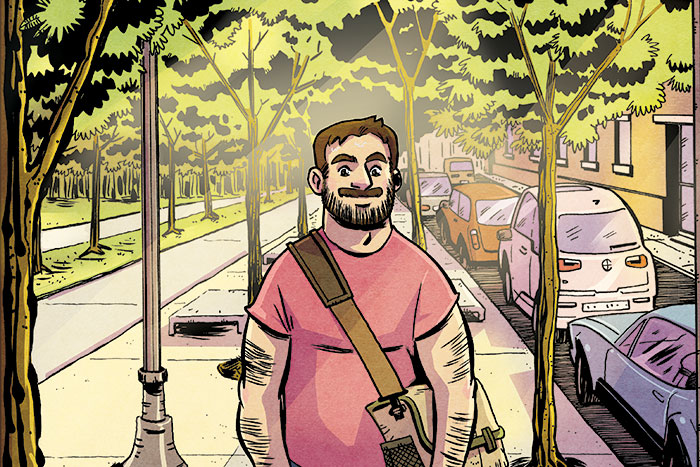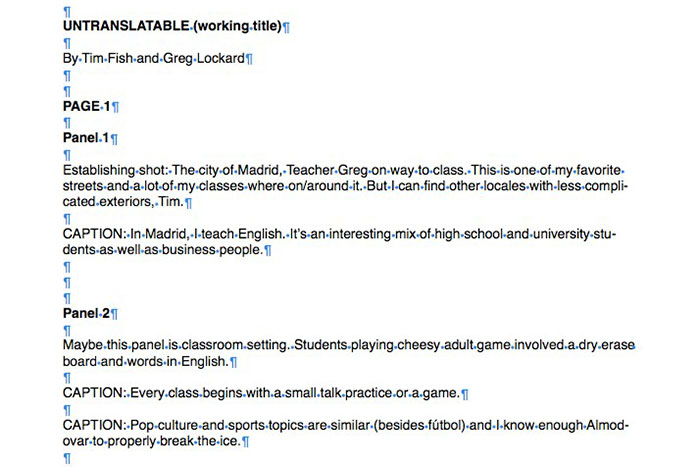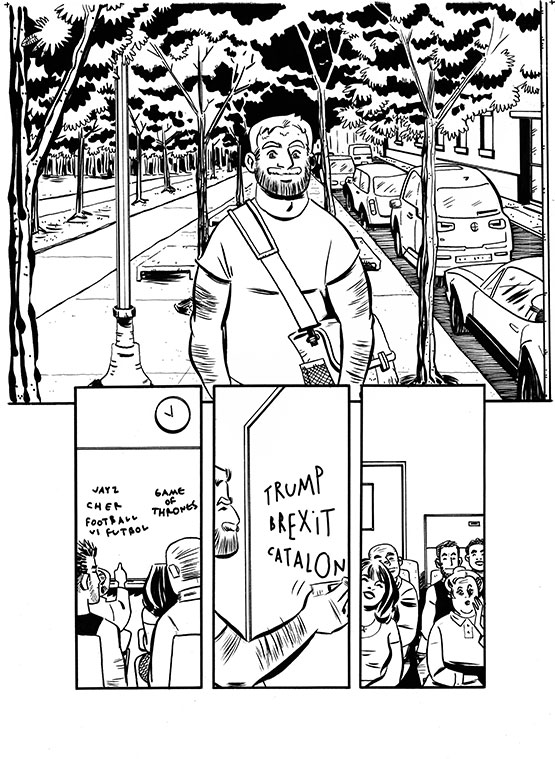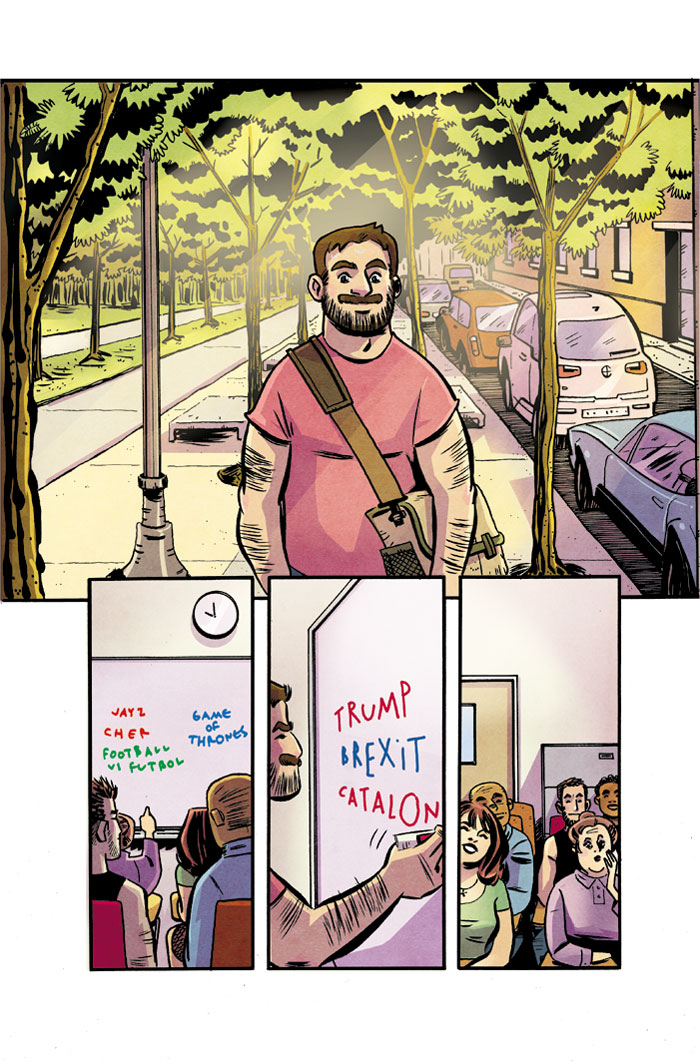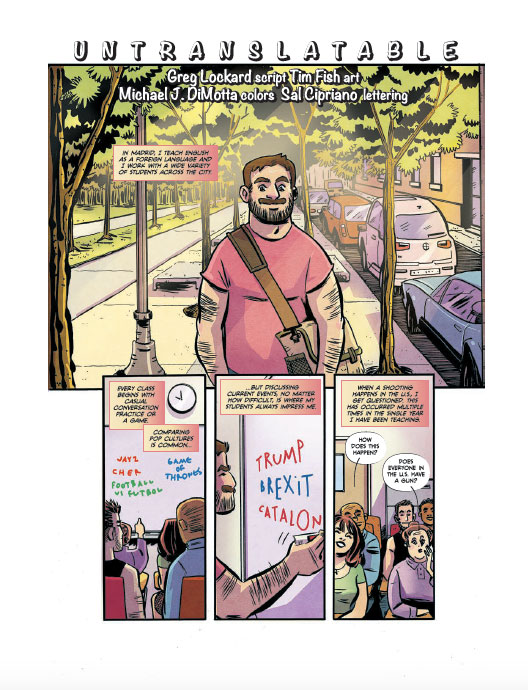by Gregory Lockard ’03
For the purposes of this how-to, I’m dividing the steps amongst different artists. This is the commonly used production style of Marvel and DC Comics for their monthly superhero titles. Many comics are created by a single person completing every stage of development, though! The sample is from a script I wrote for my friend and collaborator Tim Fish to draw for the Where We Live anthology published by Image Comics this past May.
There are many ways to make a comic—this is just one example. I encourage everyone to try! It’s my dream job, and I’m very happy to share it with others.
1
Story Concept to Script
The concept behind this story is my first-person narration as an English teacher in Spain attempting to explain the current events and laws of the United States to my students.
A comic book script looks similar to scripts used for stage, film and TV, but instead of scenes and camera angles, the writer gives the artist ideas for the best visuals.
2
Line Artwork Artist Tim Fish translated the script into line art—inked on a traditional art board and then scanned to send digitally to the next contributor.
3
Color Artwork Next, artist Michael J. DiMotta applied color. (Fun fact: I’ve known Mike since my DC Comics summer internship in 2002, when my faculty advisor was Professor of Creative Writing Susan Perabo!)
4
Lettering and Design Designer Sal Cipriano then added the dialogue, captions and title design.
5
Publishing The two-page story was released in the Where We Live anthology created to benefit the victims and families of the October 2017 shooting in Las Vegas. I’m very proud of our story, and I hope it helps people in some small way.
Greg Lockard ’03 is a writer and editor of comic books. He began his career at DC Comics in New York as a summer editorial intern and continued with the company for eight years, eventually joining the editorial staff at DC’s Vertigo imprint. He now works in a freelance capacity, and his clients include 3 Floyds (for the Alpha King series published by Image Comics), Joe Books (for adaptations of animated features as Disney Cinestory books) and Einhorn’s Epic Productions (for animation and comic book development).
Read more from the fall 2018 issue of Dickinson Magazine.
TAKE THE NEXT STEPS
Published October 19, 2018
